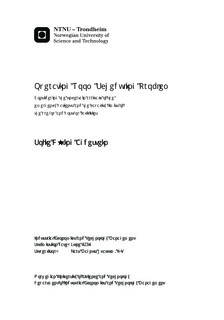Operating Room Scheduling Problem: Considering the uncertain arrivals of the emergency patients and the capacity limits of the pre-op and post-op facilities
Master thesis
Permanent lenke
http://hdl.handle.net/11250/266196Utgivelsesdato
2012Metadata
Vis full innførselSamlinger
Sammendrag
This thesis proposes a solution approach to the operating room scheduling problem (ORSP) with two types of demand for surgery: known elective demand and uncertain emergency demand. The ORSP consists of scheduling elective surgeries to an operating room and a time period, while minimizing costs. The uncertainty regarding emergency patient arrivals and the capacity constraints of the pre-op and post-op facilities are taken into account. The problem is modeled using multi-stage stochastic programming, and the dynamics of the emergency patient arrival process are shown using a scenario tree structure. Two types of recourse decisions are allowed in each stage; a scheduled elective patient may be postponed one time period (type 1), or the operating room can be changed for the elective patient within the same time period (type 2). In addition, the emergency patients arriving must be allocated rooms in each stage. The model is implemented in XpressMP. Two heuristics are applied to the model: fix and relax and an improvement algorithm. The computational study shows that including the uncertainty by using the multi-stage model presented is beneficial for problems represented by up to 8 scenarios. The model performs the best when only allowing recourse decisions of type 1. For the test instances used, including the pre-op and post-op capacity constraints seem to be of a small value.
